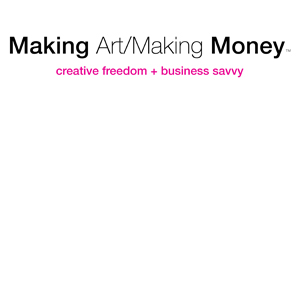The thought leaders at the World Domination Summit really reenergized my personal mission to obliterate the starving artist mythology and to issue a direct challenge to the gatekeepers of the scarcity and permsission based art establishment.
How do I plan to execute this mission? By helping artists like you become more business savvy so that you can secure your creative freedom and share your successes by example.
I’m a perfectionist by nature, a double edge sword. So I was waiting to have all of the pieces of the puzzle in place before I started enrolling and interviewing students for the pilot Making Art/Making Money, an 8-week, guided, online multi-media course.
Then I thought, what the heck am I waiting for? Artists have been asking me to do this for years. I need to get this show on the road now and see who’s on board.
So I’ve decided to open early enrollment into this special pilot course of Making Art/Making Money.
Although everyone is welcome to apply, this course is not a good fit for everyone, and there will only be 9 students accepted into the first pilot course.
This limited enrollment is not a sales angle, it’s the truth. I’m only willing to enroll artists who are ready to bring their A-game because some of them will become course mentors in the future.
I’m really excited about Making Art/Making Money because it enables me to reach so many more artists.
This new platform allows me to have a greater impact by teaching artists practical and real life principles and strategies that I’ve learned the hard, and the very expensive way, from my own successes and failures.
And I’m sharing the lessons learned, and the key insights, from an array of artists I’ve coached, including:
· crafts men
· film makers
· fine art illustrators
· healing practitioners
· mixed media artists
· musicians
· painters
· photographers
Just like art school, Making Art/Making Money isn’t cheap. But the difference is, I stand behind it by offering a 100% Guarantee.
If your are seriouly interested, I encourage you to apply today.
Just so you know. I get and I appreciate that not everyone is going to enroll in this course or recive one-on-one coaching or consulting but you’re always welcome to ask me specific art businesss and marketing related questions here.
If your questions is specific and relavent, I’ll answer it. I promise.







